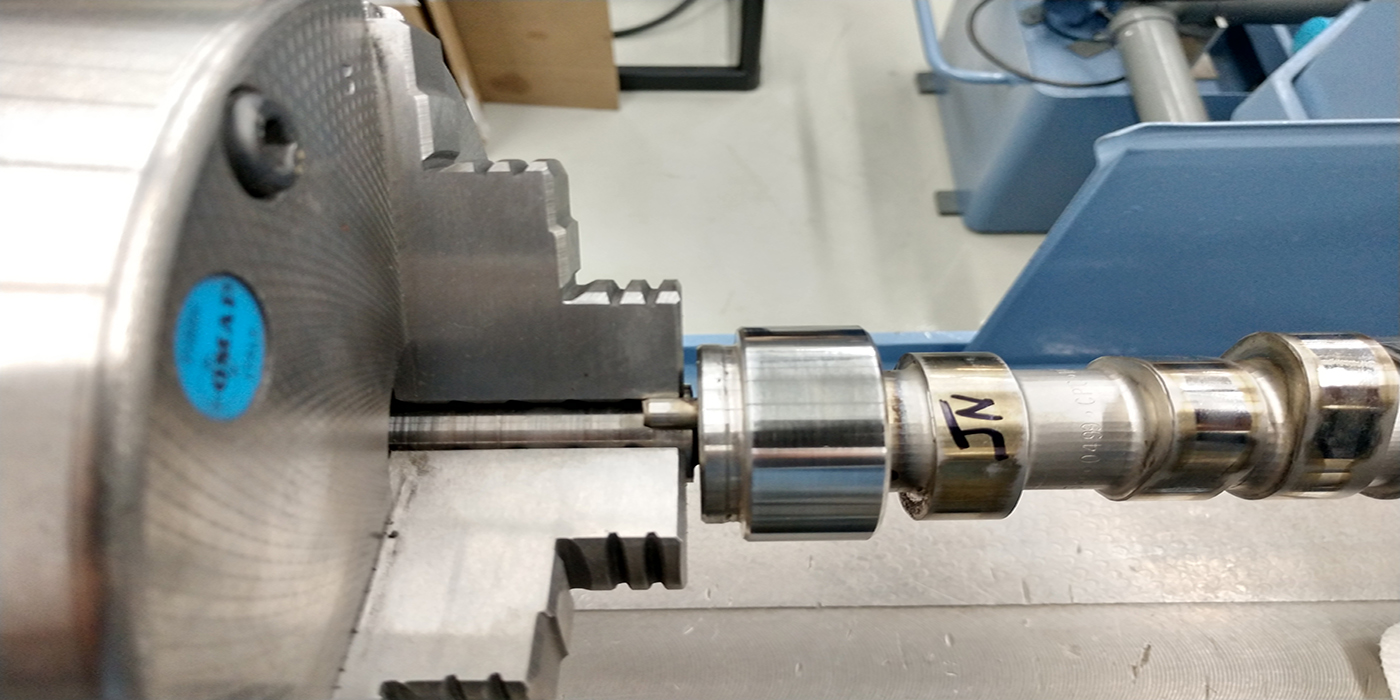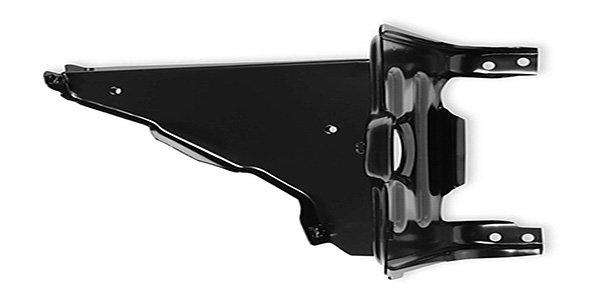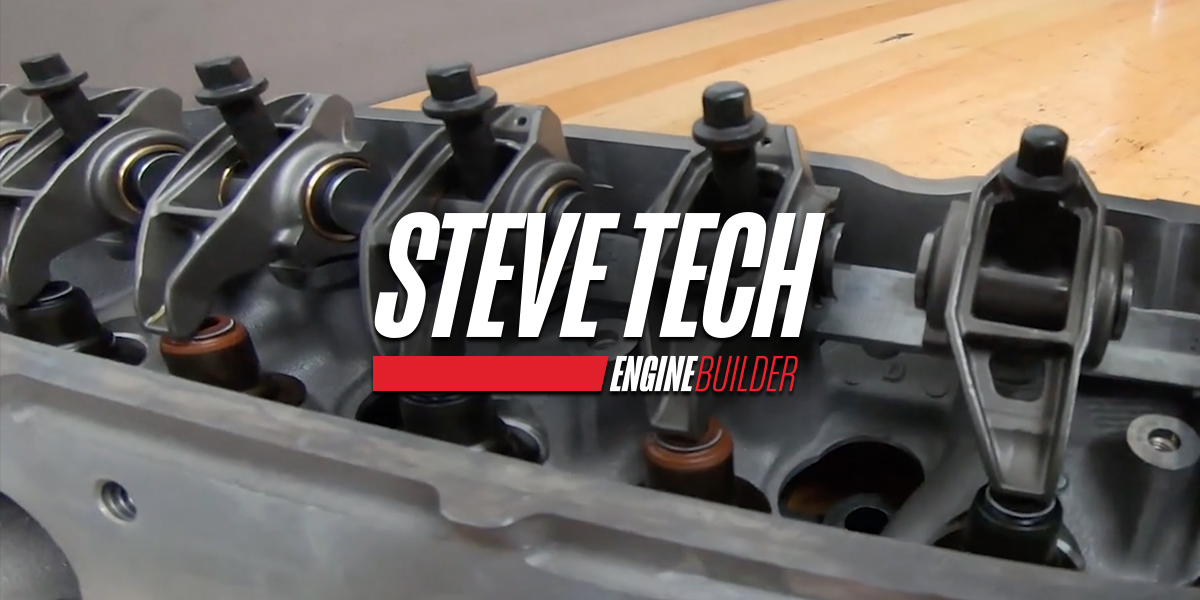A nitrous engine can be built as a stock rebuild or it can be a dedicated effort to maximize the total performance package. As more power is generated, more waste heat, exhaust air flow and combustion pressures push the limits of engine strength. Often more beef is needed in the drive train and tires.
The most common mistake made when using nitrous oxide injection concerns ignition timing. A normally aspirated engine makes its best power when peak cylinder pressures occur between 14 and 18 degrees after TDC. KB Pistons usually require 34 degrees BTDC ignition timing at full mechanical advance to achieve proper ATDC peak cylinder pressure. The total time from spark flash to the point of peak pressure is typically 48 to 52 degrees.
If an engine is producing 30% of its power from nitrous, the maximum cylinder pressure will occur too close to TDC to avoid run away detonation. If ignition does not get retarded, good-bye hp and head gaskets. The key to getting max hp from a max nitrous engine is to shift the maximum cylinder pressure event progressively further after TDC.
Cylinder pressure of 1,000 psi at TDC (Fig. 1), can drop to 500 psi with less than 3/8" of piston travel (Fig. 2). If you can manage to get 1,000 psi in the same engine after the 3/8" travel, (Fig.3), the pistons will have to travel an additional 3/4" to lower the cylinder pressure to 500 psi, (Fig.4). Work is defined as a force times distance. An average pressure, (750 psi X 12-1/2 sq. in.), times distance in feet, (3/8"divided by12), equals 293 foot pounds of work.
Our second example, because it has twice the chamber volume above the piston location, must move twice as far to lower the cylinder pressure by 1/2. Since all the other numbers, by our own definition are the same, the force multiplied by a distance twice that of the first example will equal twice the work done, 586 foot pounds of work.
There is no free lunch in horsepower equations because to get 1,000 psi above the piston in the second example takes twice as much fuel and energy as the 1,000 psi in the first example. What this offsetting of the peak pressure does is allow us to use the extra fuel mix available to a nitrous engine without breaking and melting things.
The system that allows us to postpone maximum cylinder pressure is ignition timing retard. To a lessor extent short rod ratios, lower compression ratios, high rpm, aluminum heads, a tight quench, a rich fuel mixture, a small carburetor and hotter cams tend to delay maximum cylinder pressure.
Understand that, in our quest to delay cylinder pressure’s peak time, more is not necessarily better. Instead, consider that the ideal cylinder pressure would be just short of detonation pressure and this pressure would be maintained from top dead center, and as long as possible after TDC.
If timing is really late, you won’t build enough cylinder pressure to start the car, let alone drive it. The 1,000 psi pressure in the example is not the maximum allowable combustion pressure but, rather, a comfortable pressure for illustration of the work principle.
Some nitrous manufacturers recommend, "retard the timing two degrees for each fifty horse power of nitrous." Other nitrous kits have the flame speed artificially slowed by the intentional use of a rich fuel to nitrous ratio.
The maximum performance engine with a heavy nitrous load must achieve peak cylinder pressure progressively further after TDC. The heavy load engine will have the fuel and oxygen mix to make high cylinder pressures, with the combustion chamber size being drastically increased due to the piston being on its way toward bottom dead center. The strongest engines have less compression ratio, less spark advance, and more nitrous.
I have tried to explain the reason for a spark retard system in a Nitrous engine. However, many people just don’t like the idea of any retard. They say, "retard timing and exhaust heat goes up". It usually does in a stock non-nitrous engine because lower peak cylinder pressure slows the burning. If the timing is retarded in a non-nitrous engine, the exhaust opens before the fuel mix is finished burning and exhaust temperatures go up.
Piston temperatures usually go down and exhaust valve temperature goes up. In the nitrous engine, exhaust temperature goes up for several reasons. The first is that the power output has gone up considerably. More power usually produces more waste heat. Second, the need to keep maximum cylinder pressures within reason has dictated that the biggest part of the fire happens closer to the exhaust valve opening time. There just isn’t enough piston travel to extract all the energy out of the charge before the exhaust valve opens.
Now, we could and sometimes do, open the exhaust valve later so more combustion pressure energy can be used to turn the crank. The trade off is negative torque on the exhaust stroke. If we still have significant cylinder pressure in the cylinder as the piston moves from BDC to TDC on the exhaust stroke, your net Hp falls drastically. A real problem at higher rpm.
You can improve maximum power stroke efficiency and minimize exhaust pumping losses by running the engine at lower rpm and/or improving the exhaust valve size, lift and port design. A big nitrous engine likes everything about the exhaust to be big. If it flows good enough the cylinder will blow down by bottom dead center, even at high rpm with relatively mild exhaust valve timing.
There are many variables in the design and development of an all out nitrous engine. A mistake will cause the melt down of any brand of piston. The high strength of the KB piston will withstand detonation and severe abuse. Unfortunately, all pistons will melt and when cylinder pressure limits are exceeded, run away detonation can occur.
The excess detonation heat makes the plugs, valves and piston so hot the ignition system alone can not be used to shut the engine down. Continued operation worsens the situation to the point of a total melt down. Designing a maximum performance nitrous engine is more of an exercise in heat management than it is in engine building.
A lack of a sufficient fuel supply is probably the most common killer of the nitrous engine. If you add a 300 hp kit to your present 300 hp engine, your fuel requirements roughly double and a shortage doesn’t just slow you down, it melts things. An electric fuel pump and fuel line devoted entirely to the nitrous equipment is recommended. Some people add a small "race fuel" tank just for the nitrous.
If you are using a diaphragm mechanical pump to supply fuel to the carburetor, it is worth while to increase the fuel line ID If the carburetor goes lean while the nitrous is on, the pistons can melt even with a rich nitrous fuel jetting. The large fuel line trick (1/2" dia.) only makes a major improvement in the operation of diaphragm mechanical fuel pumps. It is a waste of time on most electric applications. An electric pump pushing a mechanical pump is not recommended and does not do well at high engine rpm.
A large size line is effective with a mechanical pump, even if you use smaller fittings at the tank, fuel pump and carburetor. The advantage of the 1/2" large line is not related to the steady state flow rate of the line. The advantage relates to the acceleration time and displacement of the pulsating flow common to the mechanical pump.
High compression ratios can be used with nitrous but shifting the maximum pressure after top dead center becomes more and more difficult. I prefer to use street compression ratios and then just work with adding more nitrous to get desired Hp levels.
We are currently testing some pistons specifically designed for nitrous use. Current "off the shelf" pistons have been successfully run with a 500 Hp nitrous kit combined with a Dr. Jacob’s nitrous control system. Most of our effort has been to develop new ideas that will push the limit of nitrous technology. More testing is planned with a piston especially plated to reduce detonation.
For more information about building with nitrous, read David Vizard’s book titled "Nitrous Oxide Injection," published by S-A Design. It should be required reading by anyone wanting to run nitrous successfully.
Courtesy of United Engine & Machine






